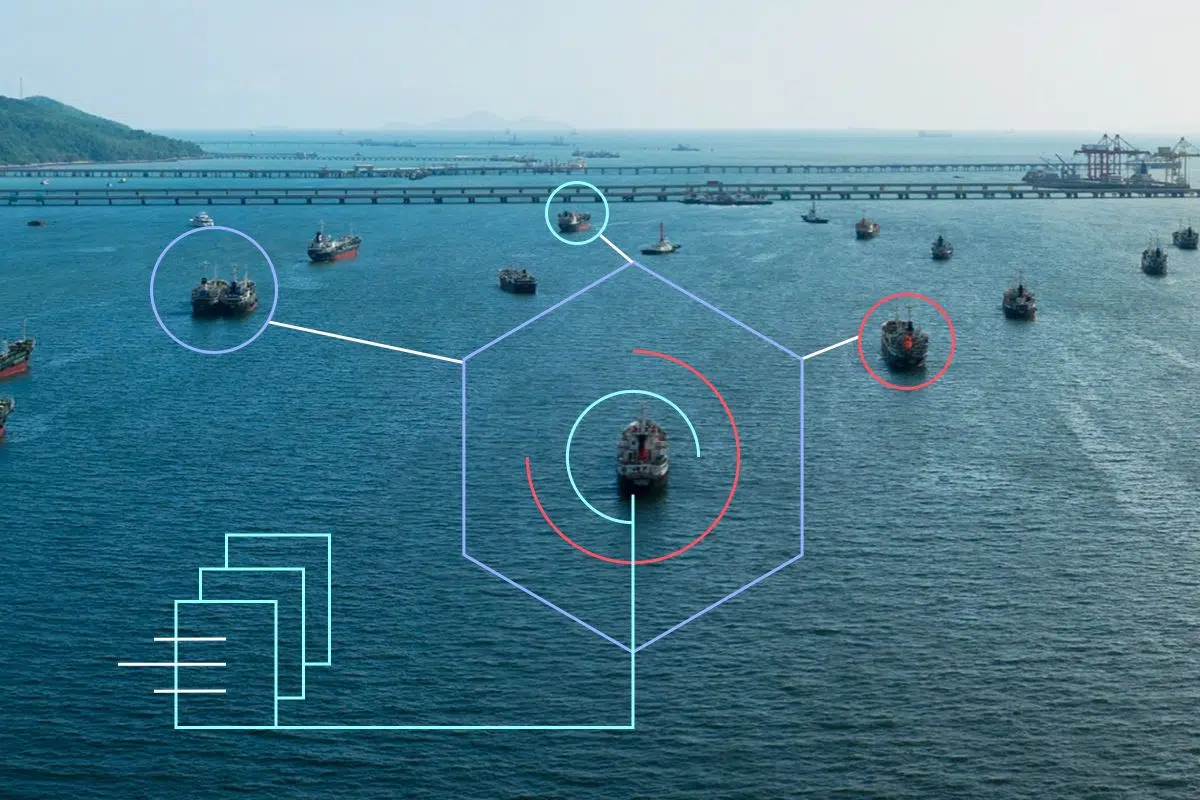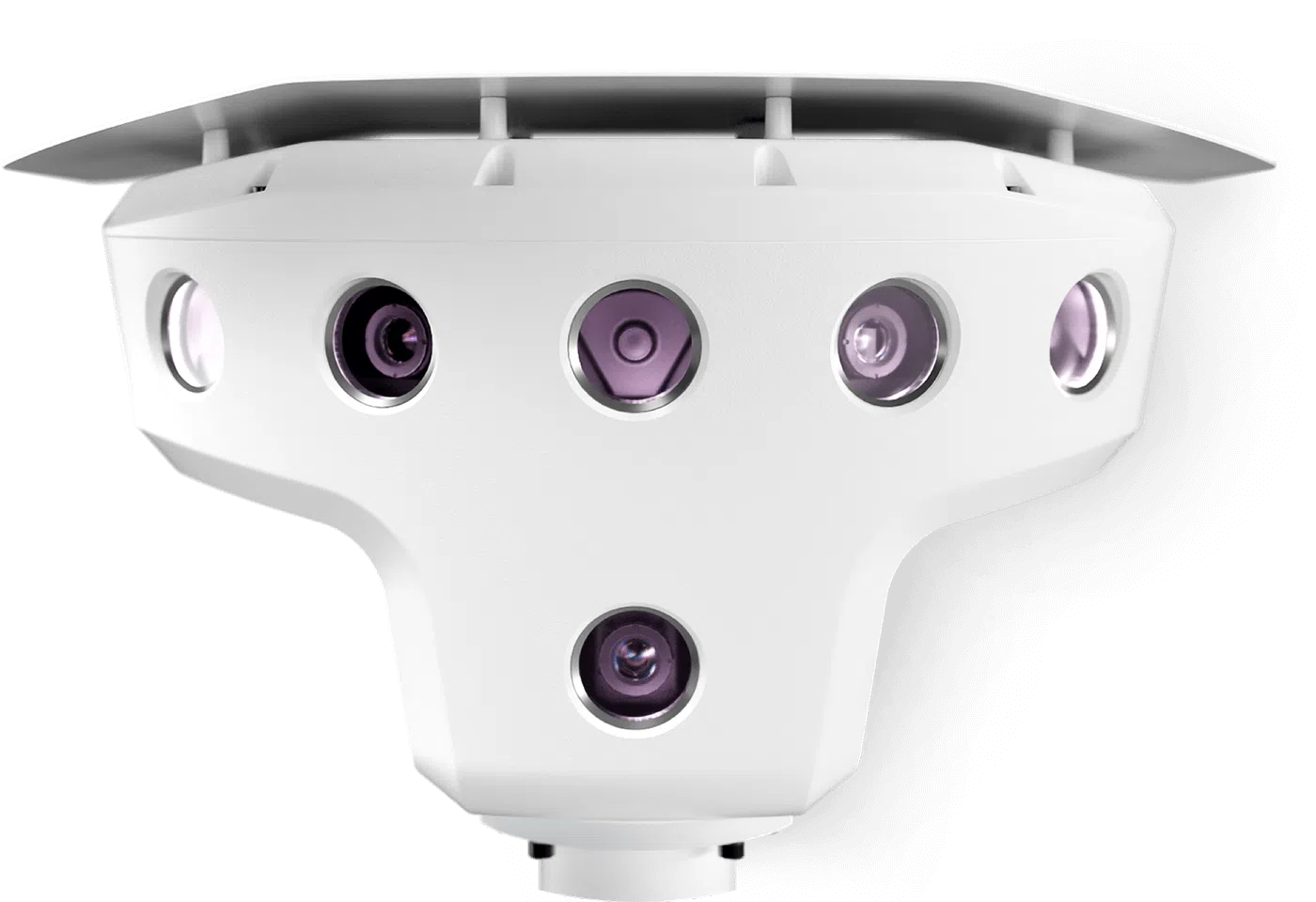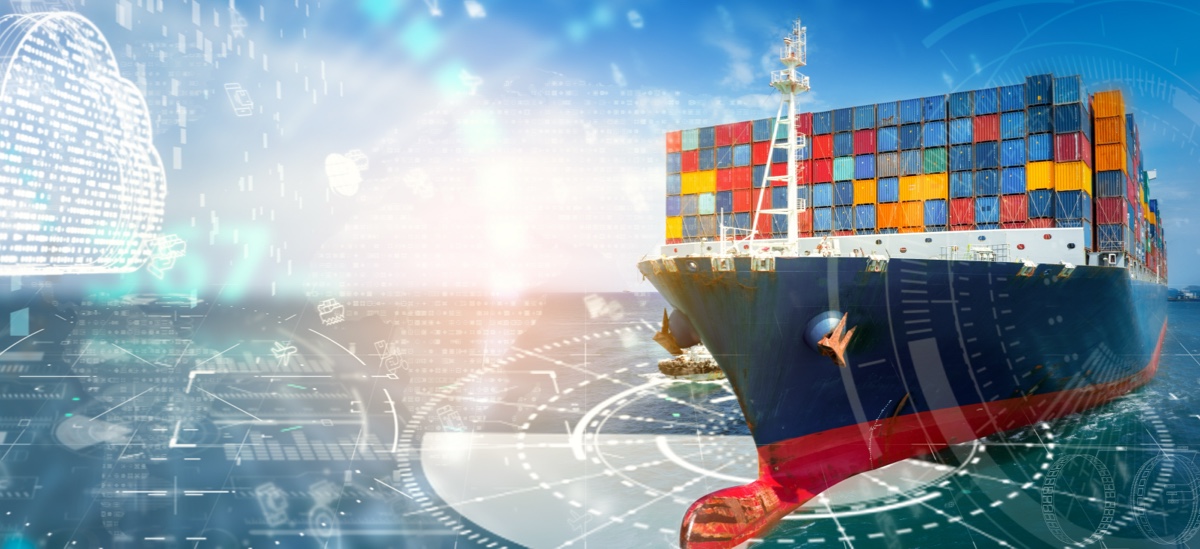Artificial intelligence (AI) has been making waves in various industries, forecasted to reach $300 billion in investments by 2026 according to IDC (2023). From healthcare and finance to the automotive sector, AI is increasingly becoming embedded in all walks of life. Although the maritime industry is traditionally reliant on expertise and experience rather than data analysis, it is also experiencing a technological transformation. With the introduction of sophisticated AI-driven solutions such as maritime situational awareness systems, the sector is witnessing a shift towards leveraging AI, advanced algorithms, and sensor technologies to enhance safety, efficiency, and profitability.
Notably, AI’s advancements in the shipping industry are evident in the development of autonomous vessels equipped with AI-powered navigation systems. These autonomous ships, equipped with advanced sensors and machine learning algorithms, will be able to navigate through complex maritime environments, mitigating human error, and improving overall operational safety, with minimum human intervention. AI’s analytical capabilities extend beyond autonomy, optimizing navigation routes by analyzing vast datasets and considering factors like weather conditions and traffic patterns can cut shipping costs by up to 20%. Additionally, AI’s predictive maintenance functions improve equipment management, foreseeing maintenance needs to prevent breakdowns and minimize downtime by up to 45%.
Last but not least, AI in maritime navigation is augmenting situational awareness and safety across all maritime operations. Through the integration of advanced sensor technologies, maritime navigation artificial intelligence can monitor vessel movements, enhance the vessel’s object detection capabilities to reduce potential collisions by 75% and provide real-time alerts to navigators. Imagine standing at the helm of a modern ship, but instead of human eyes scanning the horizon, it’s AI doing the heavy lifting. This heightened awareness significantly reduces the risk of accidents, safeguarding both human lives and valuable cargo.
Key benefits of artificial intelligence in the shipping industry
By leveraging AI technologies, the shipping industry can make significant improvements to efficiency, safety, and sustainability, ultimately leading to improved overall performance and competitiveness of whole fleets. Some of the notable advantages include:
Risk assessment for enhanced safety
AI-based object detection systems for ships act as an additional set of eyes on board, providing continuous surveillance. This 24/7 vigilance significantly contributes to safety enhancements in maritime operations, monitoring vessel movements, and detecting potential hazards, particularly in visibility conditions that may impede human watchkeeping. In risky scenarios such as bow crossing, head-on collisions, and high-pitch and roll potential the crew can be alerted in real-time.
Fuel savings through route optimization
In maritime navigation, the challenge of delayed action combined with the necessity of adhering to fleet safety policies often results in excessive avoidance maneuvers. This, in turn, leads to extra distance, extra fuel consumption, and extra costs. AI-driven process optimization and predictive modeling facilitate route optimization, streamlining operations, optimizing resource allocation, and ultimately reducing costs.
AI-based enhanced decision-making onshore
AI’s data analysis enhances decision-making for onshore fleet and safety management. Based on AI statistical insights, operator shore offices are able to monitor fleet performance, identify unsafe practices, and dynamically optimize strategies. This facilitates the swift implementation of preventive measures and response to unforeseen incidents, contributing to overall maritime operations performance.
Alleviating crew shortages
Implementing AI in shipping offers a promising solution to address the increasing crew shortage in the maritime industry by reducing reliance on human intervention through automation and smart technologies. This enables vessels to operate with minimal human oversight, allowing for more efficient and cost-effective operations.
AI for enhancing navigation safety
The significance of AI’s role in enhancing navigation safety cannot be overstated, particularly in light of approximately 4,000 reported safety-related incidents annually. While this figure suggests a decline in incidents compared to previous years, it highlights the ongoing challenge within the maritime industry. The imperative for advanced safety measures is clear, considering the substantial financial losses, environmental harm, and loss of lives associated with such incidents. Through real-time data analysis, predictive modeling, and advanced navigation assistance, AI has the potential to preempt safety incidents by identifying risks, alerting crews, and, crucially, enabling prompt corrective actions.
Several AI-based solutions have been developed to address safety concerns in the maritime industry, leveraging AI, advanced algorithms, and sensor technologies to enhance situational awareness and mitigate risks at sea. These solutions include autonomous vessel control systems that utilize AI to govern navigation, propulsion, and other critical functions, enabling ships to operate with minimal human intervention, collision avoidance technologies that employ sophisticated algorithms to analyze sensor data and predict potential collision scenarios, triggering evasive maneuvers or alerts to mitigate risks and AI-powered navigation and automation systems that utilize predictive analytics, machine learning and real-time monitoring capabilities to anticipate adverse conditions and provide timely insights for crews. The convergence of AI, advanced algorithms, and sensor technologies contributes to safer and more efficient maritime transportation.
Notably, Orca AI’s maritime navigational assistant, the SeaPod, stands out among these for its proactive approach to maritime safety, automating navigation processes, and enhancing situational awareness for bridge crews in challenging conditions. By detecting, tracking, and classifying targets that may pose a risk to the vessel or violate the company’s SMS, and providing real-time alerts to the crew, the AI-based digital watchkeeper minimizes the risk of human error, reducing bridge crew workload, and addressing a major shortcoming in contemporary maritime operations.
While acknowledging the upfront costs associated with implementing AI-driven safety measures, they are much lower than the potential expenses resulting from maritime accidents. Legal entanglements, environmental harm, and reputational damage far exceed the costs of the initial investment. This strategic investment not only bolsters the bottom line by avoiding potential financial setbacks but also ensures the continuity of operations by upholding a positive industry image, ensuring adherence to regulations, and, crucially, prioritizing the safety of seafarers.
Advancing with AI: A continuous exploration
The impact of Artificial Intelligence on the maritime industry is substantial, with the potential to alter conventional practices. From process optimization to improved collision avoidance systems and autonomous vessels, AI plays a pivotal role. It is crucial to recognize that integrating artificial intelligence in the shipping industry is not a one-time achievement but an ongoing journey. As AI technologies evolve and new advancements emerge, maritime professionals must remain agile and open to embracing advanced solutions with unprecedented gains. However, these possibilities come with challenges, including regulatory considerations, ethical concerns, and the need for robust cybersecurity measures.









